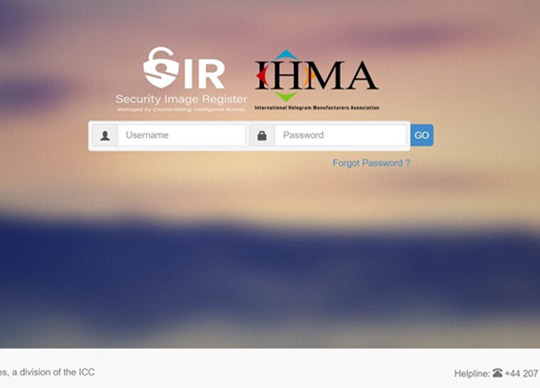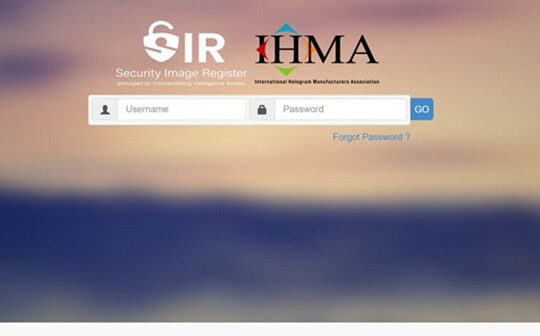
The secure registry of holographic images, established by the International Hologram Manufacturers Association (IHMA) to safeguard hologram copyright and underpin the use of holograms in authentication and security printing, has been expanded to include all optically variable security features and relaunched as the Security Image Register (SIR).
The expanded register, the only system of its type for the secure document community, will introduce image registration to the full spectrum of optical security manufacturers. It provides a global database that protects the security image by recording and identifying all copyright associated with each design and manufacture of a security image. Each registration will be allocated a unique reference number that can be tracked to support authentication of the image and its copyright.
The expansion and rebranding of the current Hologram Image Register, as the SIR reflects the changing dynamics of the global security printing industry and security features. Holograms are increasingly being incorporated and integrated with other optically variable devices (OVDs) to provide advanced anti-counterfeiting solutions, but they are only one – albeit an important one – of a number of different imaging technologies that offer colour change, movement, animation and/or 3D effects.
Key changes at a glance are:
- The Primary Visual Feature selection has been updated to include a choice of 13 current optical technologies that now fall with a general OVD (Optically Variable Device) category. They include micro-lens arrays, micro-mirrors, plasmonics, nano-gratings, colour change, caustics, polarisation, photonic crystals, special print-generated effects etc, or a combination of these.
- The HIR phrase and logo has been replaced by Security Image Register phrase and logo.
- The word hologram will be replaced by OVD.
The centrally held global database of secure images will continue to be operated on behalf of the IHMA by the Counterfeiting Intelligence Bureau under the strictest confidence and security that supports ISO14298* on behalf of members.
In addition to hologram producers, the SIR will be available to all manufacturers of secure optical variable devices, security printers and designers of documents. It will also be available to central government and institutions such as central banks, revenue authorities and passport issuers, through their security feature suppliers
It will enable them to verify that their security design, or elements of the hologram design, do not infringe copyright or allow the unintentional copy of existing security images. The image registration is completed once the design has received clearance.
The SIR will also be accessible to law enforcement agencies, allowing them to check for the provenance of a design when they need information on a suspect feature.
According to Dr Paul Dunn, Chair of the IHMA: “The SIR reflects a rapidly changing and innovative global sector, where the technology is increasingly a part of an integrated security strategy to protect and secure documents and brands. It represents a beneficial step forward, more accurately reflecting the way holograms and other OVDs are designed and used – undoubtedly facilitating an increase in the registration of images to secure their integrity.”
The SIR includes nearly 10,000 registrations – a number that is growing by the day. To date, it has helped to prevent numerous attempts to source copy holograms as well as helped to confirm that suspect holograms were indeed fakes. This in turn, helped support the law enforcement authorities in their pursuit of the counterfeiters.
Furthermore, registration of a hologram design has been a pre-condition of many tenders and procurement, particularly by government bodies such as central banks, revenue authorities and passport issuers, as well as brand owners. It is expected that this will now apply to other images registered with the SIR too.
*ISO 14298 – Management of Security Printing (and Security Foil) Processes specifies requirements for the management of security printing processes. Its goals are:
- To improve the security for the industry in regards to security printing and aid the fight against fraud and forgery
- To reduce trade barriers by encouraging uniform practices around the world
- Satisfy clients’ increasing security needs






